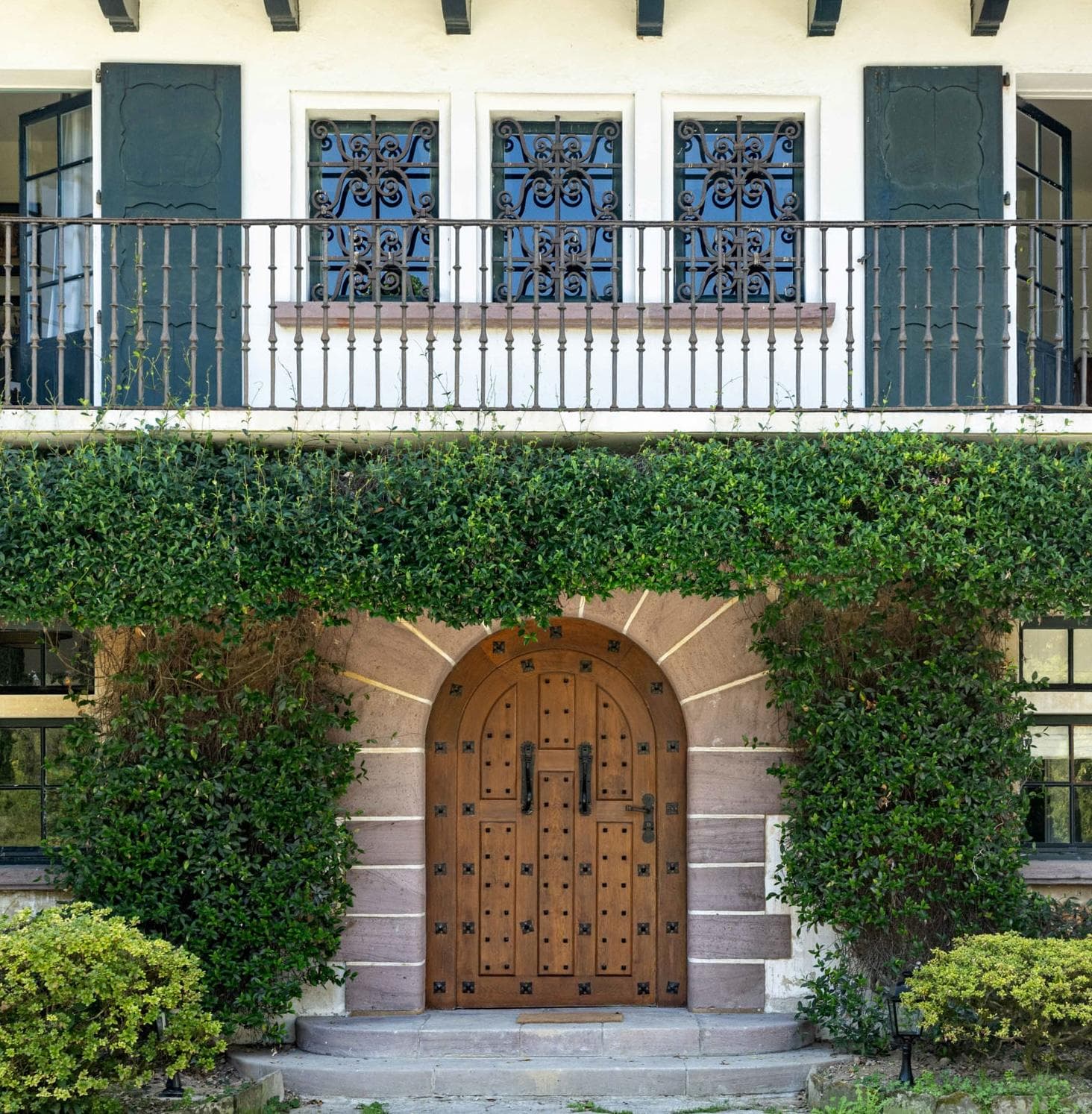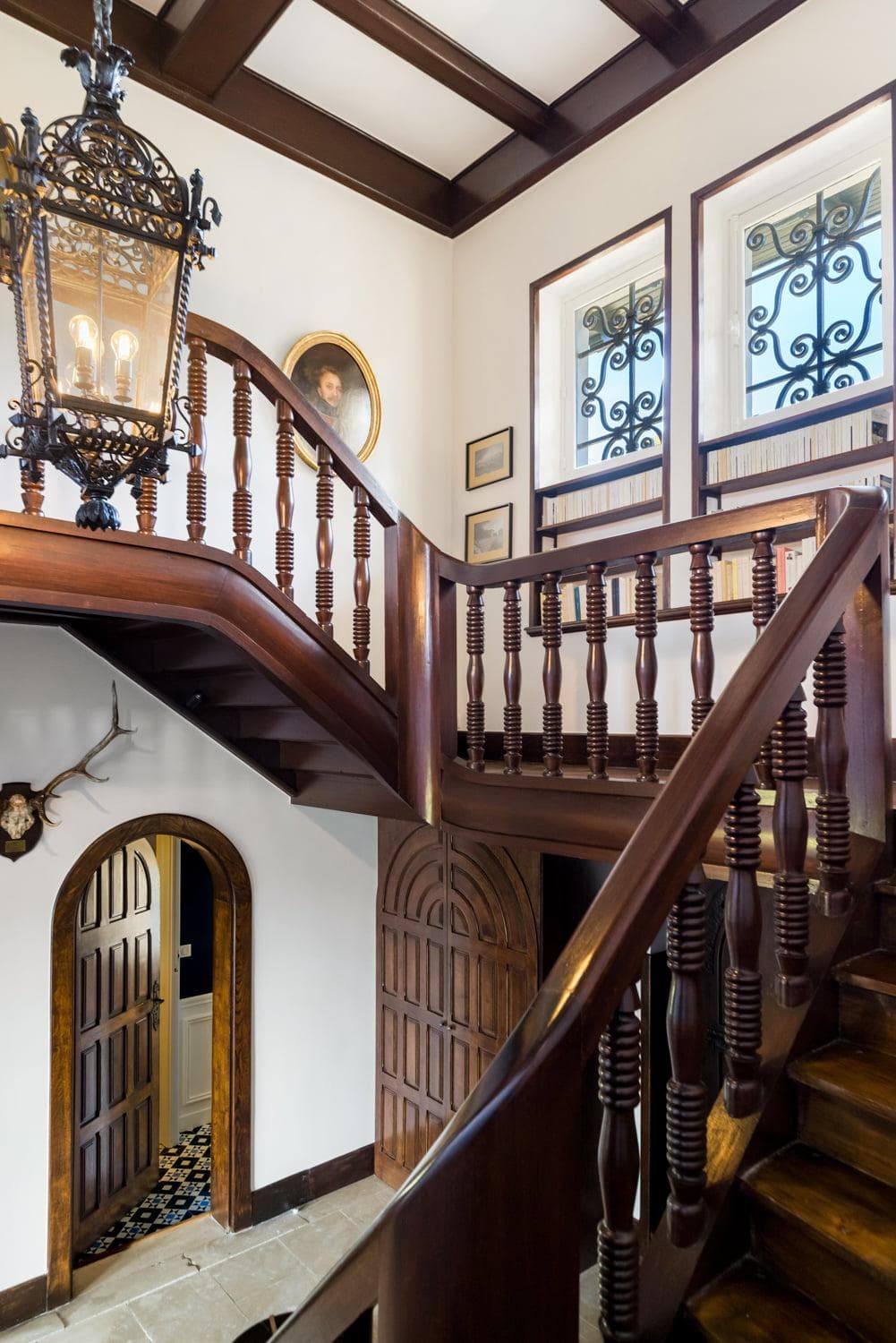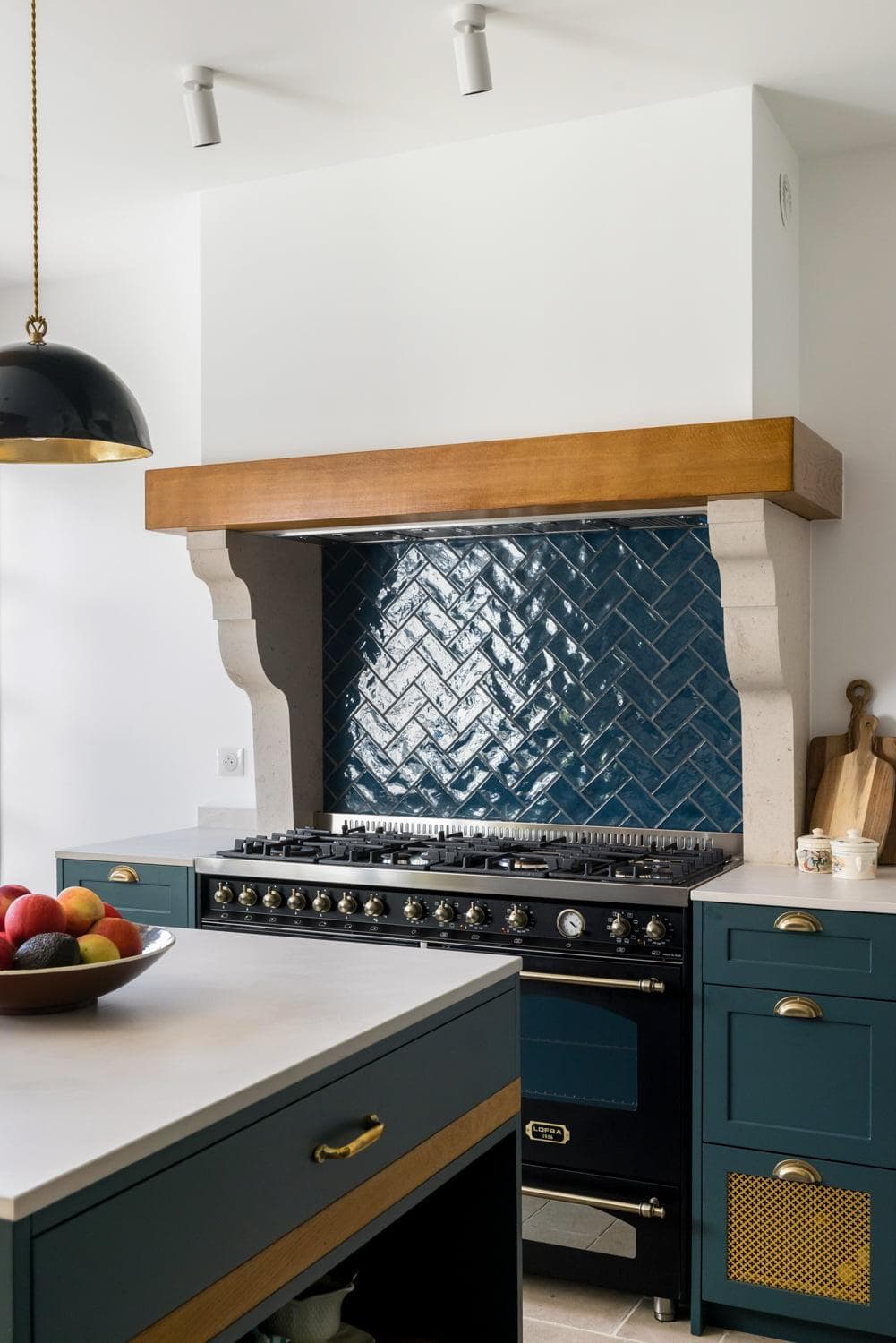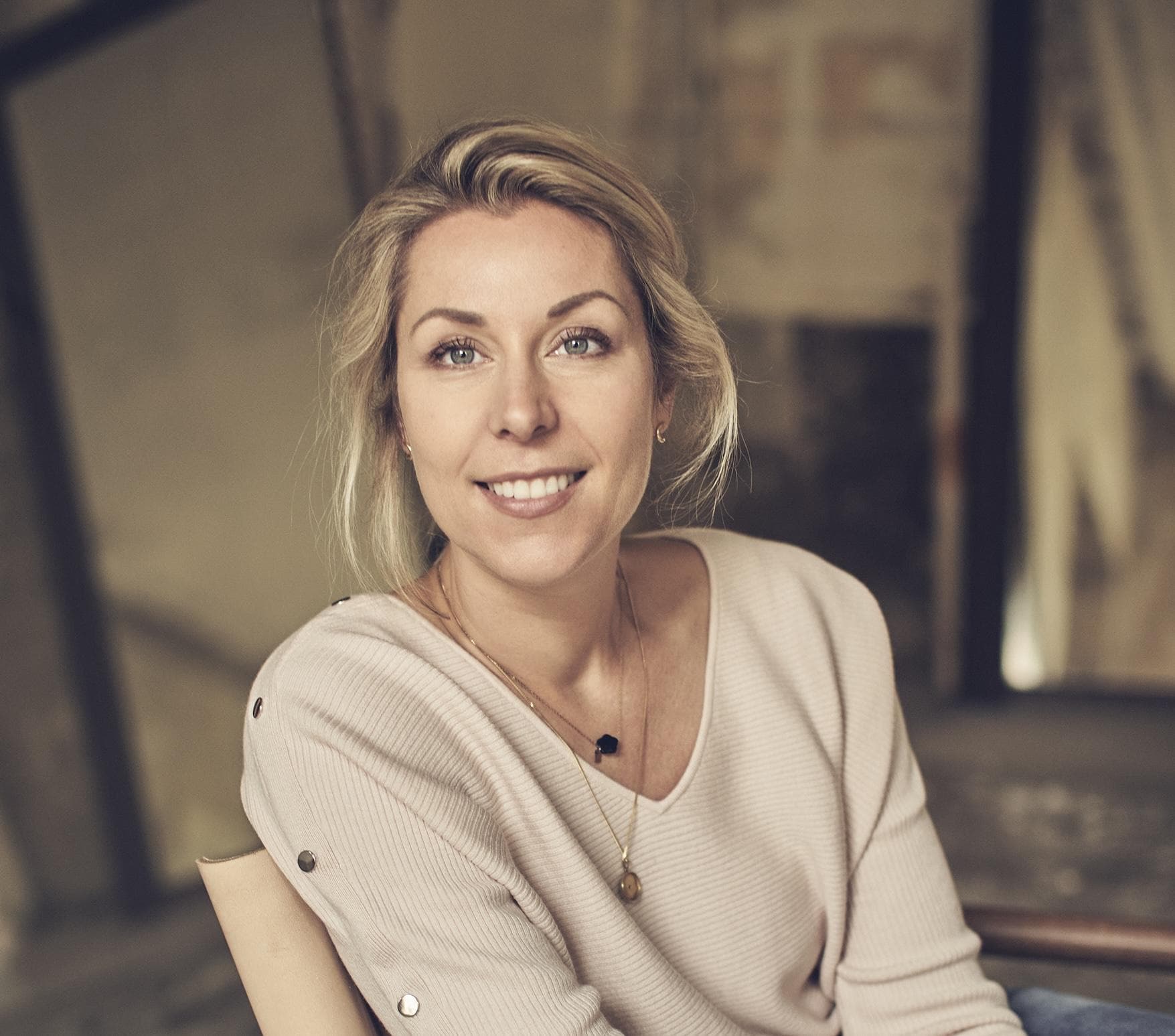Diane de Sédouy: The art of revealing beauty
Since 2017, Diane de Sédouy has been guiding her clients through renovation projects with a simple mission: transforming interiors into places that feel good to live in, while staying true to their unique style. One of her latest projects? Villa Iratz Aldea, a neo-Basque family home facing the Rhune.
Diane de Sédouy: The art of revealing beauty
In Paris and across France, Diane designs private spaces where light flows easily, volumes feel open and every detail falls into harmony. Her inspirations come from a lifelong curiosity, nurtured by childhood visits to flea markets, antique fairs and museums. She combines this passion with fine materials and the expertise of trusted artisans. From fabrics and wallpapers to carefully chosen accessories, Diane uses every element to bring warmth, style and new life to interiors.

The entrance to Villa Iratz Aldea.
During the renovation of Villa Iratz Aldea, how did you reconcile modernity with respect for the family history of the house?
Diane de Sédouy: That is a big question! When we took over the house in 2022, the structure was in good condition with the roof, walls and electricity all sound, but the interiors had hardly been touched. Almost nothing had changed since the 1930s and 1950s. It felt frozen in time, both in its atmosphere and in the family’s collective memory.
We had to step back in order to give the house a new lease of life and also to make it our own. We spent a long time sorting, organizing and donating so that the spaces could be cleared and then redefined to match our tastes, our family and the way we live today. After all, no one lives in a house in 2025 as people did in 1950.
The kitchen, for example, was far from the warm, family-friendly space we expect now, most likely because earlier generations did not spend much time there.
The real challenge was to respect the soul of the house without being trapped by the past, both in how it looked and in how it was lived in.
Were there any original elements that you were determined to preserve?
Overall, we wanted to keep all the original elements that contribute to the DNA and the neo-Basque Art Deco identity of the house. Villa Iratz Aldea was built between 1925 and 1928 by Jean-Baptiste Darroquy, a renowned regional architect who was one of the leading figures of Art Deco regionalist architecture, alongside Louis Gomez, Henri Godbarge and André Pavlovsky. This style experienced remarkable growth during the Roaring Twenties, a period when the Basque coast enjoyed exceptional popularity.
How would you describe the style or atmosphere you aimed to create in the house?
The guiding principle of the renovation was to showcase Iratz Aldea’s Art Deco identity while avoiding the risk of turning it into a cold, impersonal museum. Iratz Aldea is above all a family home, meant to be lived in by those who inhabit it and the many friends who gather there. Our main goal was therefore to make the house comfortable, warm and bright in every season, including the winter months or when the Basque weather turns unpredictable.
The décor also draws inspiration from Basque regionalism, expressed through paintings, pottery from Ciboure, ceramics and playful nods to bullfighting. From Bayonne to Bilbao and Pamplona, this tradition remains one of the many facets of Basque identity.

The beautiful solid wood staircase at Villa Iratz Aldea.

The kitchen at Villa Iratz Aldea.
What is your philosophy when it comes to designing spaces?
I work by immersing myself in books, magazines and documentaries. I need to see inspiring places in order to imagine how to reinterpret these periods in a simple and contemporary way. What I enjoy most is creating a bridge between these eras and the present, always with subtlety. My goal is to design spaces that remain elegant while being easy to live in.
Do you have any rituals or methods to connect with a space before imagining its renovation?
I dedicate a lot of time to it: I conduct research and create numerous moodboards that serve as guides throughout the project. I revisit them regularly to ensure that I stay on course.






